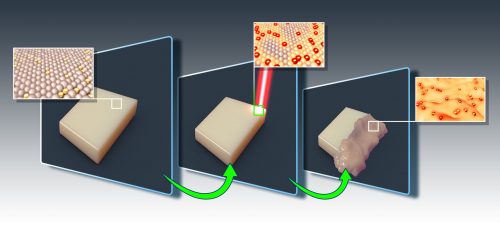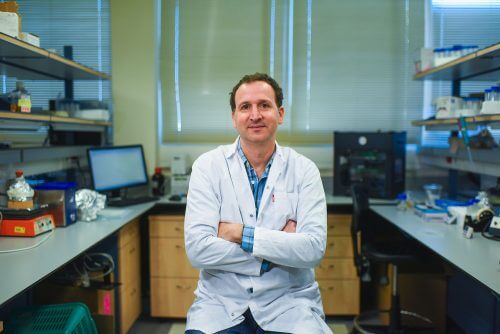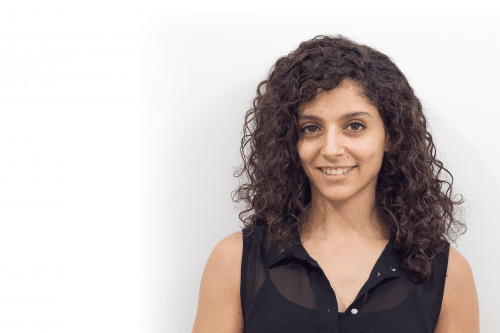Researchers at the Faculty of Biotechnology and Food Engineering at the Technion have developed a technology to release drugs at the exact place in the body using light, without any invasive intervention

The enormous progress in medical science in the last hundred years has led to the development of effective drugs for various diseases in general and cancer in particular. However, the random distribution of the drugs throughout the body reduces their effectiveness and, moreover, causes damage to healthy tissues. This is the reason why cancer patients treated with chemotherapy suffer from hair loss and intestinal problems - tissues characterized by rapid cell turnover are therefore damaged by the drug, whose main activity is to inhibit cell division.
This is the background for the worldwide effort to develop smart methods for transporting the drug to the exact target without it coming into contact with healthy tissues. now, In an article in the journal ACS Applied Materials & Interfaces, a breakthrough achieved in this context at the Faculty of Biotechnology and Food Engineering at the Technion is presented.
Doctoral student Alona Shegan and Associate Professor Beaz Mizrahi developed an innovative technology that allows the drug to be released, after consumption, only in the diseased tissue for which it is intended. This is through a unique polymeric packaging in which, besides the drug, nanometer gold particles are trapped. When you shine a light on the package, the gold particles heat up and melt it, so the medicine is released.
According to PhD student Alona Shagan, "photo-triggered materials play a central role in many biomedical applications, but despite their enormous potential, many of them are not applicable for two reasons: a. toxicity of the polymer packaging itself; B. Damage caused by high-energy light (short waves)."

The Technion researchers developed the unique packages so that they melt as a result of the irradiation of light in long waves (NIR). As a result of the light irradiation, the gold particles heat up, melt the polymer packaging and release the drug. The main advantage of NIR - near-infrared light - is that it penetrates the body's tissues without damaging them.
"Here we have developed a material with variable melting points, which allows us to control the fusion using the wavelength," explains Associate Professor Mizrahi. "The advantage is that our packaging is made of polymers approved by the FDA (American health authorities), so we estimate that the road to clinical application will be relatively short."
The researchers estimate that the new technology could also be used for purposes other than the transfer of drugs, for example as a sealant for external and internal injuries, for the temporary fixation of tissues during surgery and as a biodegradable scaffold for growing tissues intended for transplantation. Maybe even as substances with self-healing properties for medical and other uses. According to Prof. Mishna Mizrahi, "In the current article we focused on the concept and the material - how we can produce the material so that it matches the requested mechanical and physical properties. The next step, which we will publish in another article soon, includes packages containing medicine, so that we can test the improvement in the effectiveness of medicines following the use of the technology we have developed."
Alona Shagan is on a direct path to a doctorate, after completing her bachelor's degree at the Wolfson Faculty of Chemical Engineering at the Technion. She grew up in Netanya, served in the 8200 and at the same time as studying for her bachelor's degree was active in the Student Association of the Technion. "Science and engineering have attracted me since childhood, and already in my first year at the Technion it was clear to me that I would continue with advanced degrees." In the summer she will fly to Boston to better understand what medicine needs today in the context of new materials of the type she is developing here.

Prof. Mishna Mizrahi, born in Givatayim, began his academic career with a bachelor's degree in pharmacy at the Hebrew University. Already in his master's degree, at Hadassah Ein Kerem, he began to develop technology for transferring drugs to the target tissue without them breaking down on the way and harming the healthy tissues. After completing his doctorate at the Hebrew University, he went on to do a post-doctorate at MIT and then, about four years ago, joined the Technion as a faculty member in the Faculty of Biotechnology and Food Engineering. The laboratory for biomaterials under his leadership deals with a wide range of research, mainly in the context of creating new materials (synthesis) while controlling their properties. "You can say that instead of buying a ready-made cake, we buy flour and sugar and thus control the properties of the product," he says. "Our inspiration comes from nature, because nature has a huge laboratory and billions of years of development, and thus it finds very effective solutions to various challenges. Therefore, it is clear that it pays for us to learn from him or at least get inspiration from him, certainly when we work on applied developments."

4 תגובות
Can anyone explain how they produce the polymer in question?
There is no amazing development on the Jewish mind! Kudos to you!
Thanks for the advice Dr. Dodo!!
It will reach us in a very long time. All this is only good for those taking pictures in the article. Continue with the traditional Amol that is abundant in the country.